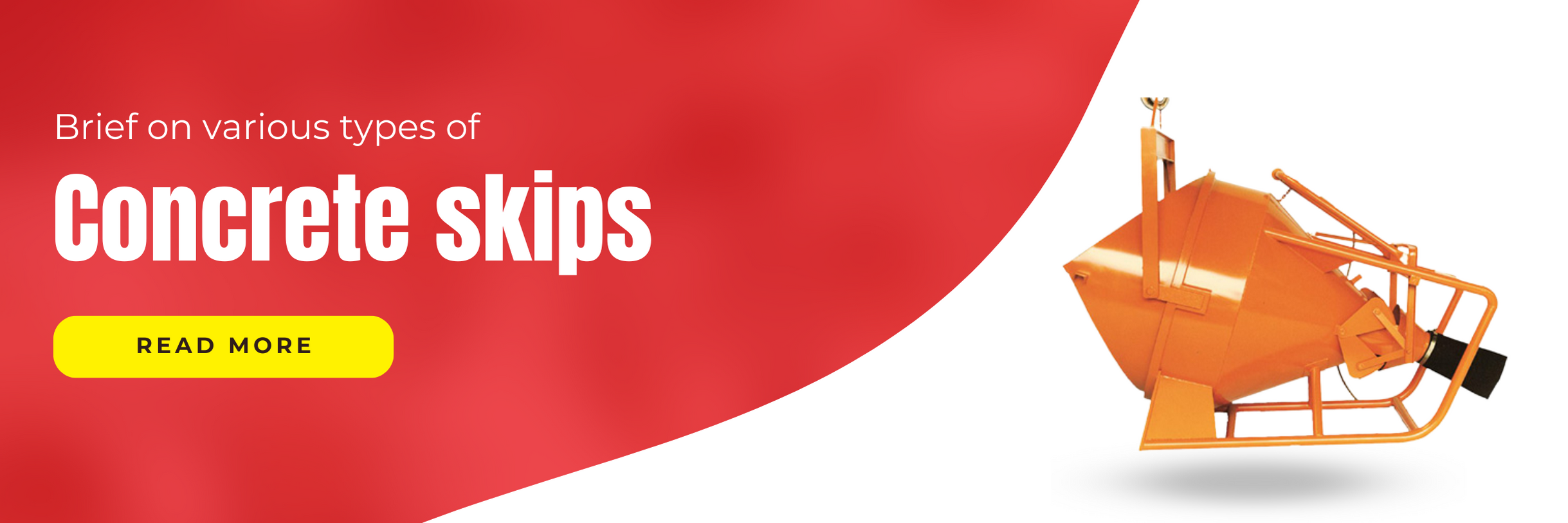
Brief on various types of Concrete skips
Concrete skips, also known as concrete pumps, are specialized containers for use in concrete construction to transport and pump concrete with accuracy and precision into a small area. They are attached to a crane to allow a controlled pour. The various types of concrete skips used in the industry are designed to provide flexibility and precision when applying concrete.
Here are some common concrete skips found in construction:
Bottom Discharge Concrete Skip:
The concrete in this type of skip is released through a hinged bottom discharge gate. A bottom discharge gate allows concrete to be released through a precise area, giving the operator some flexibility and control when pouring. The operator can operate the gate manually or by a hydraulic system.
Side Discharge Concrete Skip:
The side discharge skip is similar to the bottom discharge skip except that the concrete is
discharged through the side of the skip. A side discharge skip is very useful when working to pour concrete into forms or construct structures from one side or angle.
Column Concrete Skip:
The column skip is designed to pour concrete directly into vertical columns or formwork. They are narrow and long, and the concrete is placed exactly into the column without spills.
Funnel Concrete Skip:
The funnel skip is an inverted funnel shape with an opening at the bottom. The narrow opening ensures the concrete is directly discharged into the pouring space. They are used for pouring concrete into deep or narrow spaces where accuracy is critical.
Rope Operated Concrete Skip:
A rope operated skip is controlled by a rope and pulley system attached to the crane. This
means the skip can be easily maneuvered and repositioned for pouring accuracy.

Clamshell Concrete Skip:
The clamshell skip has a hinged lid that opens up to release the concrete. A clamshell skip is particularly useful for controlled pouring and prevents spillage during transit and pouring.
Bunded Concrete Skip:
A bunded skip is provided with an additional layer or containment area around the skip for preventing leakage or spillage. They are most commonly used while working on hazardous or environmentally sensitive materials.
These concrete skips vary in the type, allowing the construction team to use them according to needs. This ensures that they are part of the process in pouring concrete into specific areas of the construction site, maximizing the process through minimizing wastage while ensuring the quality of placing concrete. Depending on the project, a skip may be chosen to suit the needs, which encompasses the type of structure, access points, and any environmental considerations.
